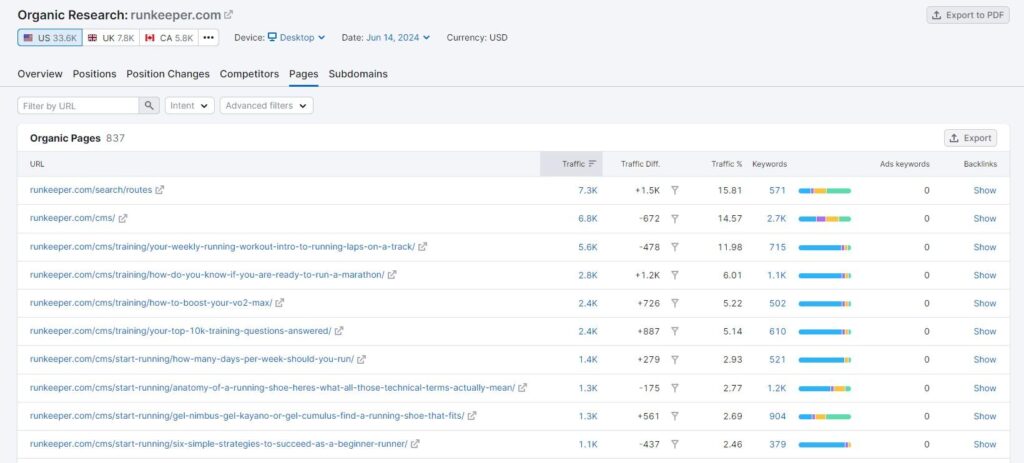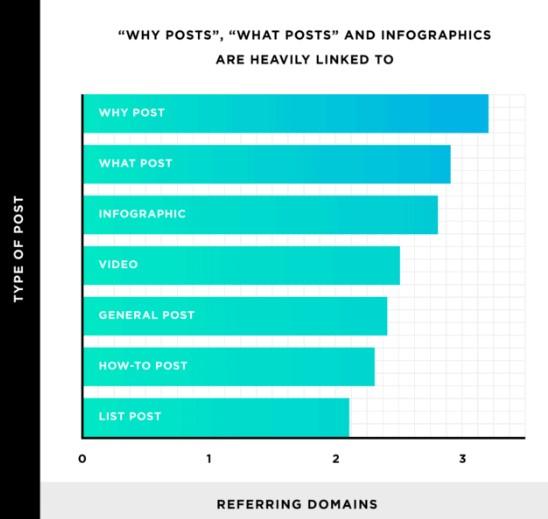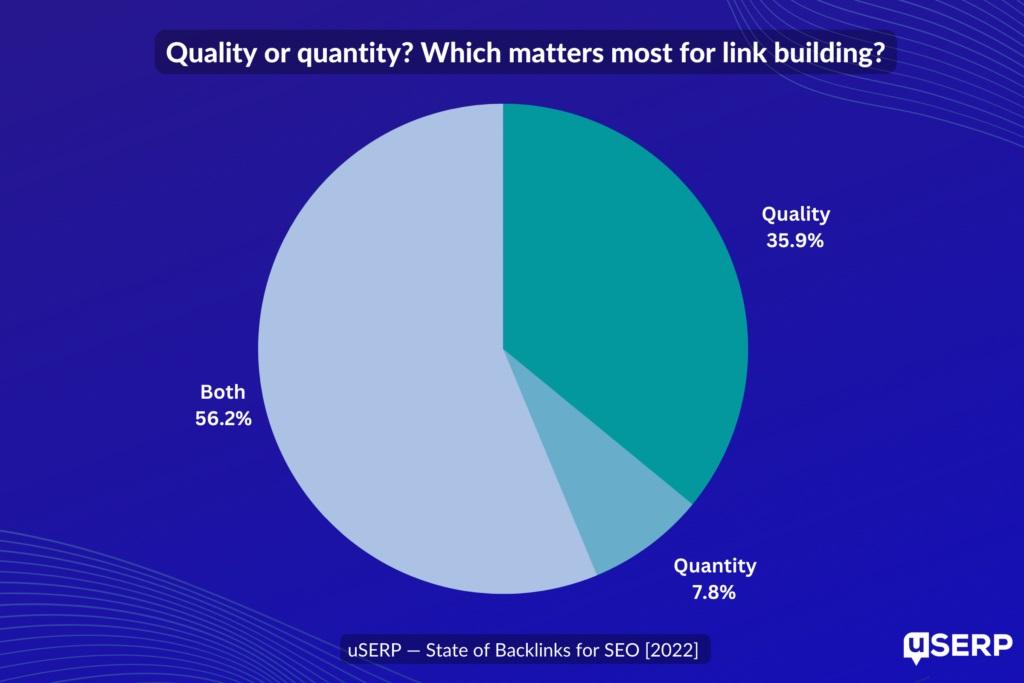7 Link Building Strategies That Work For Us: 100k Links and Counting
Daniel Trick
Jul 05, 2024
9 min read
Link building is one of the hardest parts of SEO.
It takes technical skill, creativity, and a lot of hard work.
Here at fatjoe, we’ve helped agencies build over 100,000 backlinks in the last 10+ years.
We haven’t discovered a perfect, one-size-fits-all link building strategy, but we have developed a few tried-and-tested tactics that get results.
And that’s what we’re going to reveal in this guide.
You’ll learn actionable link building strategies that you can use to help your clients rank higher in Google.
Want to watch instead? We’ve got you covered with our video here!
What Are Link Building Strategies?
Link building strategies are the methods you use to get other websites to link back to yours. These strategies aim to improve your website’s authority and search engine ranking.
Backlinks are one of the most important Google ranking factors. The more relevant, authoritative websites linking to your site, the more likely you are to rank higher in search results.
The impact of links on rankings is unlikely to change any time soon. According to a recent survey, 65% of SEOs believe links will have the same or higher value in 5 years:

7 Effective Link Building Strategies
Here are 7 effective link building strategies you can use to get better results for your SEO clients:
Blogger Outreach
Blogger Outreach is a link building strategy where you connect with bloggers in your industry to build relationships and secure relevant links. It usually involves collaborating on content and including an editorial in-content link to your website.
This is our go-to tactic for link building campaigns. It can be super effective.
In a recent survey, PR managers ranked blogger outreach as the most effective outreach strategy for link building:

First, you need to find bloggers with an audience that would be interested in your content.
You can manually search Google for relevant keywords or use a tool like BuzzSumo or Similarweb. These tools can help you find relevant sites and blogs in your niche.

Once you have a list of potential bloggers, it’s time to reach out. Personalize your email to each blogger. Mention specific articles you found interesting and how a collaboration could benefit them.
The key is to offer something of value in return. That could be a high-quality guest post, promotion on your social media channels, or an editorial fee.
You’ll be sending a lot of emails. Create a spreadsheet or use an email marketing tool to keep track of your outreach.
Niche Edits
Niche edits are similar to blogger outreach.
You find a relevant website and reach out to the owner. But instead of collaborating on a new piece of content, you place a link to your website in an existing blog post.
This can be highly effective if the content is already indexed and performing well in search engines. Niche edits can also help keep your backlink profile more natural-looking.
It wouldn’t be natural for all your links to come from new URLs.
It wouldn’t be natural for all your links to come from existing URLs.
Having a mix of guest posts and niche edits is the most sustainable link building strategy. pic.twitter.com/edT8GshgtQ
— Joe Davies (@fatjoedavies) May 1, 2023
Like blogger outreach, you want to find authoritative websites relevant to your niche. However, you also need to find high-performing content on these sites to maximize the impact of your niche edit.
Pages with good organic traffic and external links pointing to them are the best candidates for a niche edit.
To find these opportunities, use an SEO tool like Semrush or Ahrefs. Enter the domain of the target website and go to organic pages.
This will show you the pages that generate the most traffic. You can also see the number of backlinks pointing to the page.

Once you’ve identified a target page, reach out to the site owner. In your email, introduce yourself and explain how your link would provide additional value to the readers.
Be specific about where your link would be best placed and how it would enhance their content. For example, if they mention a topic your article covers in more detail, suggest adding a link to your content as a valuable resource.
Digital PR Campaigns
Digital PR can help you get links from high-authority media sites and publications. It involves reaching out to journalists and media outlets to pitch story ideas or newsworthy content.
In a recent survey, SEOs ranked digital PR as the link building tactic that delivers the best results:

Earning media coverage isn’t easy.
First, you need to create newsworthy content with a strong hook. This could be original research or a compelling story related to your industry.
The goal is to create something that media outlets would want to cover.
Once you have your content, identify the right people to contact. Use tools like Muck Rack to find journalists who cover topics related to your content.
Before you reach out, craft a compelling pitch. Highlight why your content is newsworthy. Include key points, any unique data, and why their audience would find it interesting.
Broken Link Building
Broken link building is a strategy where you find broken links on other websites and suggest your own content as a replacement.
It’s a win-win.
The website owner can fix their broken link, and you earn a valuable backlink.
You can use a tool like Screaming Frog to help you find broken link opportunities.
Enter the domain of a target website and run a crawl. Once the crawl is finished, click ‘Response Codes’ in the top menu. Then, select ‘Client Error 4XX’ from the dropdown menu on the left-hand side.

This will show you a list of broken links on the website.
Go through each URL to check the relevance of the page with the broken link. Your content should match the topic of the broken link to provide value to the site’s audience.
If you don’t already have relevant content, consider creating a new page or updating existing content to make it a good fit.
After you have the content ready, contact the website owner. Explain that you noticed the broken link and suggest your content as a valuable replacement.
Resource Page Link Building
Resource pages are collections of links to valuable content on a specific topic. These pages can be a great place to get backlinks.
First, you need to find resource pages related to your niche.
You can do this with a quick Google search. Use search queries like “keyword + resources” or “keyword + useful links.”

Once you’ve identified potential targets, make sure your content would be a good fit.
Your content should add value to the page by being a useful additional resource.
After confirming that your content is a good match, reach out to the website owner. Introduce yourself and explain why your content would be a valuable addition to their resource page.
Infographics
People love to share infographics. They can be an excellent way to boost visibility and attract backlinks.
In a recent Backlinko study, infographics were found to be the third most linked to type of content:

The key to a good infographic is to choose a relevant topic with plenty of valuable data to share. To make your infographic more unique, you can conduct original research.
Tools like Canva or Adobe Illustrator can help you create a visually appealing design. If you don’t have any experience with these tools, an infographic design service can save you a ton of time and provide more professional results.
Once your infographic is ready, publish it on your website. Write a detailed blog post to accompany it, explaining the data in the infographic.
Make it easy for people to share your infographic by providing an embed code. This code should include a link back to your site.
Publishing an infographic is just the start. Outreach is key to earning more shares and backlinks.
Identify websites in your niche that might find your infographic valuable. Send a personalized email explaining why it would be worth sharing with their audience.
Create Linkable Assets
Linkable assets are pieces of content specifically designed to attract backlinks. They can include ultimate guides, original research, tools, and more.
The key is to create something so valuable that it demands to be shared.
The most linkable assets you can create. @TheCoolestCool #MozCon pic.twitter.com/y1YvXkHgKP
— Joy Hawkins (@JoyanneHawkins) July 13, 2021
You need to understand what your audience will find valuable.
For example, Nomad List provides detailed information about cities around the world for digital nomads.
They collected extensive data on factors important to digital nomads and created an interactive tool. Users can filter and sort cities based on their specific preferences.

The user-friendly interface makes it easy to access and interpret the data.
The tool has helped Nomad List attract backlinks and coverage from high authority sites like the BBC, The New York Times, and TechCrunch.
You need to invest time and resources to create a linkable asset. It’s an investment in building your brand.
Once your linkable asset is ready, reach out to relevant websites and publications in your niche. The more visibility your asset gets, the more likely it is to attract backlinks.
Tips for Successful Link Building
How you execute your strategy makes all the difference. Here are some practical link building tips to help you maximize the impact of your campaigns:
Focus on Quality Over Quantity
Quality is more important than quantity. In a recent survey, only 7.8% of SEOs rated quantity as mattering more than quality for link building:

A few high-quality backlinks from reputable sites will offer much more value than a ton of spammy links from Fiverr.
Use Diverse Anchor Texts
Descriptive anchor text tells users what to expect when they click a link. It also makes it easier for search engines to understand the context and relevance of your content.
Poor Backlink:
• Generic anchor text
• From a spammy, irrelevant website
• Not within the page content (e.g footer)Great Backlink:
• Descriptive anchor text
• From a relevant, authoritative site
• Within the content of the page— Will Coombe (@willcoombe) December 4, 2022
However, using the same anchor text for multiple backlinks can make your link profile look unnatural.
Instead, mix in branded, generic, and long tail keywords. This diversity makes your backlink profile look more organic to search engines.
See Where Your Competitors Get Their Links
You don’t have to build a list of target websites from scratch. Analyzing your competitors’ backlink profiles can provide a good base of link building opportunities.
Use SEO tools to see where your competitors get their links. This can help you identify high-quality sites that might be interested in linking to your content as well.
Build Links to Your Links
Building links to your existing backlinks, known as “tiered link building,” is a more advanced SEO strategy. It’s a great way to add value to pre-existing links.
You create extra layers of links pointing to your main backlinks. This boosts the “link equity” flowing to your website. It increases the authority and impact of your primary links.
This is a great strategy if your clients are in a niche where you’d naturally expect not to get a large volume of links.
Be Realistic About Link Volumes
Never overdo it, especially when the client you’re linking to isn’t likely to naturally receive a large number of links. For example, a local plumber in Florida may initially receive a few local citations or a couple of mentions from bloggers.
But you wouldn’t expect them to get a huge number of links unless they’re a nationally recognized brand. Keep it realistic and appropriate to their scale.
Don’t Always Chase Link Metrics
Some agencies fixate on only wanting links from sites with specific metrics like DA50+. While it’s great to get links from those high-metric sites, it’s more natural to have a mix of links from websites of all quality levels and ages.
Is it realistic for only very high-quality or very low-quality sites to link to you?
Probably not.
A diverse range of links looks more organic and balanced.
Vary the Length of Content Where Your Link Appears
If you’re getting a lot of content placements, make sure they vary in length. If all your links come from 500-word articles, it can create an unnatural pattern you want to avoid.
Mix it up with different content lengths to keep things looking natural.
Don’t Just Link to Your Money Pages
Spread your links across different types of pages, not just sales or product pages.
Linking to informational content, blog posts, and other resources can create a more balanced backlink profile.
Be Patient and Consistent
Link building is a long-term process.
It takes time for search engines to recognize and value your backlinks.
You might not see immediate results, but your link building efforts will pay off in the long run.
Dangerous money-making combo:
Keyword Research + Link Building + Patience
— Chris Myles (Dad, YouTube Strategist, Newsletters) (@MrChrisMyles) July 26, 2023
This is why you need SEO quick wins to keep your clients happy in the meantime.
Get Better Results with High-Impact Link Building Strategies
Effective link building is central to boosting your clients’ search rankings and driving organic traffic.
Keep refining your strategies based on what works best for each client, and stay committed.
Use these link building tips and strategies to keep your clients growing and thriving!
Become a Pro at SEO
Join 65,000 others and learn the secrets to SEO success with our weekly blog posts.
